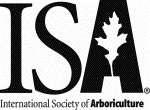
| Current Articles |
| Browse Archives |
| Search |
| Contact Us |
| AUF Home |
 |
Arboriculture & Urban Forestry Online
| Volume 31, Issue 1 —
January 2005
https://www.isa-arbor.com/Publications/Arboriculture-Urban-Forestry |
|
A FRAMEWORK FOR APPLYING INTEGRATED VEGETATION MANAGEMENT ON RIGHTS-OF-WAY (View PDF) Christopher A. Nowak1 and Benjamin D. Ballard Abstract: Integrated Vegetation Management, or IVM, is purportedly being used by many right-of-way management organizations across the United States. In many cases, IVM is just a name applied to old management approaches. Yet IVM is more than just a name. It is an in-depth and sophisticated system of information gathering, planning, implementing, reviewing, and improving vegetation management treatments. IVM is used to understand, justify, choose among, selectively apply, and monitor different types of treatments, with an overall goal of eliciting site-specific, ecosystem-sensitive, economically sensible, and socially responsible treatment effects that lead to refined achievement of management objectives. We propose a six-step system to IVM that can act as a framework of activities to aid managers and other related stakeholders in communicating, organizing, and conducting IVM business. Each step produces information that must be integrated into the management system. Our six-step system is consistent with Integrated Pest Management and other IVM-like systems developed in forestry and agriculture. We present an IVM system with some unique perspectives and ideas from the literature, and incorporate information from and experience with the electric utility industry. Keywords: Right-of-way; vegetation management; management systems; powerline corridors; electric transmission lines; pipelines; highway; railroad. |
Current Articles
| Browse Archives | Search | AUF Home | ISA Home
| Get Acrobat